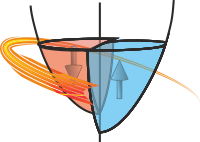ImageFile.filled¶
- ImageFile.filled(fill_value=None)¶
Return a copy of self, with masked values filled with a given value. However, if there are no masked values to fill, self will be returned instead as an ndarray.
- fill_valuearray_like, optional
The value to use for invalid entries. Can be scalar or non-scalar. If non-scalar, the resulting ndarray must be broadcastable over input array. Default is None, in which case, the fill_value attribute of the array is used instead.
- filled_arrayndarray
A copy of
selfwith invalid entries replaced by fill_value (be it the function argument or the attribute ofself), orselfitself as an ndarray if there are no invalid entries to be replaced.
The result is not a MaskedArray!
>>> x = np.ma.array([1,2,3,4,5], mask=[0,0,1,0,1], fill_value=-999) >>> x.filled() array([ 1, 2, -999, 4, -999]) >>> x.filled(fill_value=1000) array([ 1, 2, 1000, 4, 1000]) >>> type(x.filled()) <class 'numpy.ndarray'>
Subclassing is preserved. This means that if, e.g., the data part of the masked array is a recarray, filled returns a recarray:
>>> x = np.array([(-1, 2), (-3, 4)], dtype='i8,i8').view(np.recarray) >>> m = np.ma.array(x, mask=[(True, False), (False, True)]) >>> m.filled() rec.array([(999999, 2), ( -3, 999999)], dtype=[('f0', '<i8'), ('f1', '<i8')])
